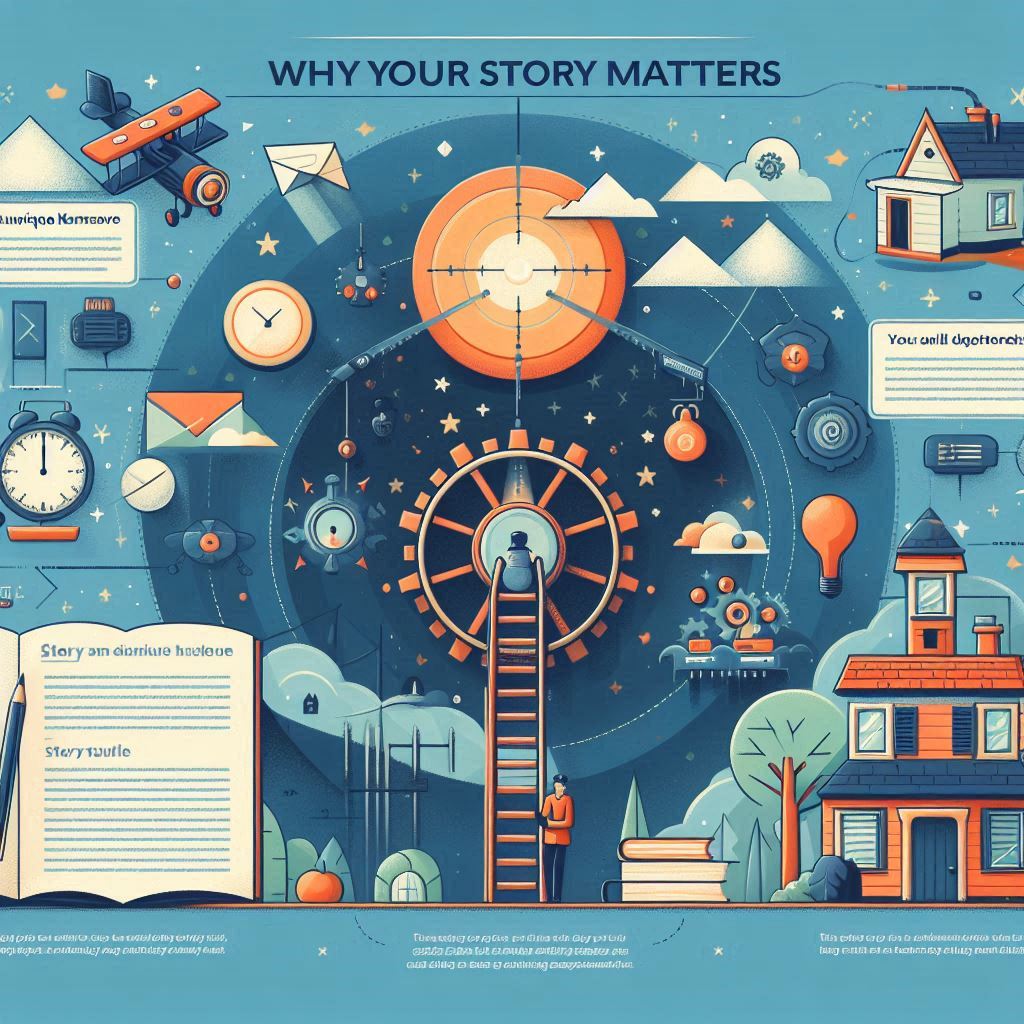Smarter storytelling in business isn’t about spinning tales—it’s about uncovering the real, powerful truths that make your brand worth paying attention to. Whether you’re a global brand or a growing startup, your identity is shaped by the stories you choose to tell and how you tell them. But in a crowded marketplace, vague slogans and flashy ads only go so far. What truly sticks with people are stories grounded in authenticity, emotion, and relevance.
The good news? Every business has stories that are worth telling—yes, including yours. The challenge is knowing how to find them, shape them, and share them in ways that feel both genuine and strategic. That’s where this guide comes in.
We’ve broken down a reliable set of methods to help you develop and refine your brand storytelling, using smart strategies and AI-driven tools to do it better and faster. Whether you’re exploring your brand’s roots, spotlighting customer wins, sharing your impact on the community, or looking ahead to the future, each technique below is built to help you connect more deeply with your audience—without losing sight of what makes your business truly unique.
No fluff. No fiction. Just structured ways to turn your experiences, insights, and values into stories that resonate, build trust, and ultimately drive action. From crafting emotionally rich campaigns to developing interactive content, this resource is all about equipping you with the tools to tell your story—your way.
Ready to get started? Let’s explore the storytelling strategies that can bring your brand to life.


Steps to Smarter Storytelling with AI
Historical Legacy Narratives
Customer Achievement Stories
Steps:
- Investigate the company’s origins and pivotal achievements.
- Pinpoint historical moments that align with current brand principles.
- Utilize AI tools to uncover distinctive perspectives from historical data.
- Develop content such as articles, videos, or social media posts that showcase the brand’s journey.
- Incorporate these narratives into promotional materials like websites or brochures.
- Refresh stories with newly discovered historical insights.
- Tailor the narrative to resonate with the intended audience.
Steps:
- Gather customer testimonials and measurable success outcomes.
- Select stories that address frequent challenges faced by customers.
- Use AI to create preliminary story frameworks based on collected data.
- Refine the narrative to emphasize the problem, solution, and impact.
- Share through formats like case studies, blogs, or social media posts.
- Encourage customers to share their experiences to expand reach.
- Continuously update with new customer success examples.
Community Impact Narratives
Visionary Growth Narratives
Steps:
- Document participation in local initiatives, events, or charitable activities.
- Identify stories that reflect meaningful contributions to the community.
- Leverage AI to personalize narratives using community-related data.
- Create content for newsletters, blogs, or social media platforms.
- Include multimedia elements such as photos or videos for added engagement.
- Share through community-focused channels to foster trust and connection.
- Evaluate storytelling effectiveness and refine strategies accordingly.
Steps:
- Establish the company’s long-term aspirations and objectives.
- Employ AI to forecast industry trends and generate future-oriented scenarios.
- Craft inspiring narratives that involve customers in the brand’s vision.
- Develop content like thought leadership articles, videos, or white papers.
- Emphasize the role customers play in achieving shared goals.
- Disseminate through professional networks or social media platforms.
- Adapt narratives based on emerging trends and audience feedback.
Customized Audience Narratives
Insight-Driven Brand Narratives
Steps:
- Collect data on customer preferences and behaviors to inform storytelling.
- Apply AI analytics to generate tailored content for specific audience segments.
- Create stories that address individual customer needs and interests.
- Deliver personalized experiences via email campaigns, apps, or websites.
- Uphold ethical standards in data collection and usage practices.
- Update personalized content based on evolving customer interactions.
- Monitor engagement metrics to refine personalization strategies.
Steps:
- Compile relevant industry reports and consumer behavior data for analysis.
- Use AI tools to extract actionable insights from collected information.
- Draft initial story concepts that highlight key findings and trends.
- Enhance comprehension with visual aids like infographics or charts.
- Share through blogs, reports, or social media channels for maximum reach.
- Ensure transparency and accuracy in presenting data-driven narratives.
- Revise stories as new data becomes available to maintain relevance.
Interactive Engagement Narratives
Emotion-Driven Stories
Steps:
- Identify themes that lend themselves well to interactive storytelling formats.
- Design engaging elements such as quizzes, calculators, or games for audiences to explore.
- Utilize AI to create dynamic content that adapts based on user input or preferences.
- Ensure interactive experiences are aligned with brand messaging and audience interests.
- Optimize usability across various devices for seamless participation.
- Publish interactive content through websites, apps, or social media platforms.
- Analyze user engagement data to improve future interactive storytelling initiatives.
Steps:
- Determine emotional triggers that resonate strongly with your target demographic.
- Craft authentic narratives designed to evoke these emotions effectively.
- Incorporate compelling imagery, relatable language, and real-world examples into storytelling efforts.
- Align emotional appeals with core brand values and mission statements for consistency.
- Distribute through impactful mediums like video campaigns or blog posts on social media platforms.
- Gather audience feedback to measure emotional resonance and effectiveness of campaigns.
- Adjust storytelling techniques based on audience reactions for continuous improvement.
Competitive Positioning Narratives
Recognition-Based Brand Narratives
Steps:
- Conduct research into competitor offerings and market positioning strategies.
- Identify unique aspects of your products or services that differentiate them from competitors’.
- Use AI tools to analyze competitive data and craft comparison-based content effectively.
- Develop infographics, blog posts, or videos that highlight your advantages clearly but fairly.
- Ensure all comparisons are accurate and unbiased to maintain credibility with audiences.
- Share these narratives through targeted marketing channels for maximum impact on potential customers.
- Update comparative content regularly as new competitor information becomes available.
Steps:
- Maintain a record of awards, certifications, and recognitions received by the company over time.
- Create content showcasing these achievements while explaining their significance within the industry context.
- Use AI tools to draft initial versions of award-related stories efficiently before refining them further manually if needed for accuracy/impact enhancement purposes later-onwards .
4.Integrate recognition-based narratives into digital platforms such as websites/social-media pages alongside press releases distributed externally across broader professional networks too .
Works Cited
Airbnb. “Host Stories.” Airbnb, https://www.airbnb.com/h/stories. Accessed 31 Mar. 2025.
Always. “#LikeAGirl.” Always, https://www.always.com/en-us/our-story/like-a-girl. Accessed 31 Mar. 2025.
Amazon. “Artificial Intelligence.” About Amazon, https://www.aboutamazon.com/innovation/artificial-intelligence. Accessed 31 Mar. 2025.
Apple. “Apple Design Awards 2021.” Apple, https://developer.apple.com/design/awards/. Accessed 31 Mar. 2025.
BuzzFeed. “Quizzes.” BuzzFeed, https://www.buzzfeed.com/quizzes. Accessed 31 Mar. 2025.
Coca-Cola. “Sustainability Awards and Recognition.” Coca-Cola, https://www.coca-colacompany.com/sustainability/awards-recognition. Accessed 31 Mar. 2025.
CNET. “CNET.” CNET, https://www.cnet.com/. Accessed 31 Mar. 2025.
Consumer Reports. “Consumer Reports.” Consumer Reports, https://www.consumerreports.org/. Accessed 31 Mar. 2025.
Dove. “Real Beauty Campaign.” Dove, https://www.dove.com/uk/stories/campaigns/real-beauty.html. Accessed 31 Mar. 2025.
Dropbox. “Customer Case Studies.” Dropbox, https://www.dropbox.com/solutions/case-studies. Accessed 31 Mar. 2025.
Ford Motor Company. “Our Story.” Ford, https://corporate.ford.com/company/our-story.html. Accessed 31 Mar. 2025.
Google X. “X: The Moonshot Factory.” Google X, https://x.company/. Accessed 31 Mar. 2025.
Harley-Davidson. “Heritage.” Harley-Davidson, https://www.harley-davidson.com/us/en/heritage.html. Accessed 31 Mar. 2025.
HubSpot. “Customers.” HubSpot, https://www.hubspot.com/customers. Accessed 31 Mar. 2025.
Levi’s. “Levi’s Story.” Levi’s, https://www.levi.com/US/en_US/features/articles/levi-s-story. Accessed 31 Mar. 2025.
Microsoft. “Awards.” Microsoft News Center, https://news.microsoft.com/awards/. Accessed 31 Mar. 2025.
National Geographic. “Interactive Features.” National Geographic, https://www.nationalgeographic.com/interactive/. Accessed 31 Mar. 2025.
Netflix. “How Netflix Recommends Movies and TV Shows.” Netflix Help Center, https://help.netflix.com/en/node/100639. Accessed 31 Mar. 2025.
Nike. “News.” Nike, https://news.nike.com/. Accessed 31 Mar. 2025.
Patagonia. “Stories.” Patagonia, https://www.patagonia.com/stories/. Accessed 31 Mar. 2025.
Pew Research Center. “Pew Research Center.” Pew Research Center, https://www.pewresearch.org/. Accessed 31 Mar. 2025.
SpaceX. “Human Spaceflight.” SpaceX, https://www.spacex.com/human-spaceflight/. Accessed 31 Mar. 2025.
Spotify. “Spotify Introduces Personalized Playlists for Every Mood and Activity.” Spotify Newsroom, 22 Jan. 2019, https://newsroom.spotify.com/2019-01-22/spotify-introduces-personalized-playlists-for-every-mood-and-activity/. Accessed 31 Mar. 2025.
Starbucks. “Community.” Starbucks, https://www.starbucks.com/community/. Accessed 31 Mar. 2025.
Tableau. “Stories.” Tableau, https://www.tableau.com/learn/stories. Accessed 31 Mar. 2025.
Tesla. “Impact.” Tesla, https://www.tesla.com/en_GB/impact. Accessed 31 Mar. 2025.
The Guardian. “Deaths on the Migrant Route to Europe – Graphic.” The Guardian, 17 Oct. 2019, https://www.theguardian.com/world/interactive/2019/oct/17/deaths-on-the-migrant-route-to-europe-graphic. Accessed 31 Mar. 2025.
The New York Times. “The Upshot.” The New York Times, https://www.nytimes.com/section/upshot. Accessed 31 Mar. 2025.
The New York Times. “Wirecutter.” The New York Times, https://www.nytimes.com/wirecutter/. Accessed 31 Mar. 2025.
TOMS. “Giving.” TOMS, https://www.toms.com/giving.html. Accessed 31 Mar. 2025.
Zapier. “Telling Your Business Story with AI Tools.” Zapier Blog, 12 Jan. 2024, https://zapier.com/blog/ai-business-storytelling/. Accessed 31 Mar. 2025.
Adobe. “5 Ways AI is Changing the Fabric of Brand Storytelling.” Adobe Business Blog, 22 Oct. 2019, https://business.adobe.com/blog/the-latest/5-ways-ai-is-changing-the-fabric-of-brand-storytelling. Accessed 31 Mar. 2025.
Forbes. “How AI is Transforming Marketing.” Forbes, 15 Feb. 2023, https://www.forbes.com/sites/forbesagencycouncil/2023/02/15/how-ai-is-transforming-marketing/. Accessed 31 Mar. 2025.
Harvard Business Review. “The Power of Storytelling in Business.” Harvard Business Review, 10 Mar. 2020, https://hbr.org/2020/03/the-power-of-storytelling-in-business. Accessed 31 Mar. 2025.
Semrush. “Using AI to Solve Customer Pain Points in Content.” Semrush Blog, 5 Dec. 2023, https://www.semrush.com/blog/ai-customer-pain-points/. Accessed 31 Mar. 2025.




